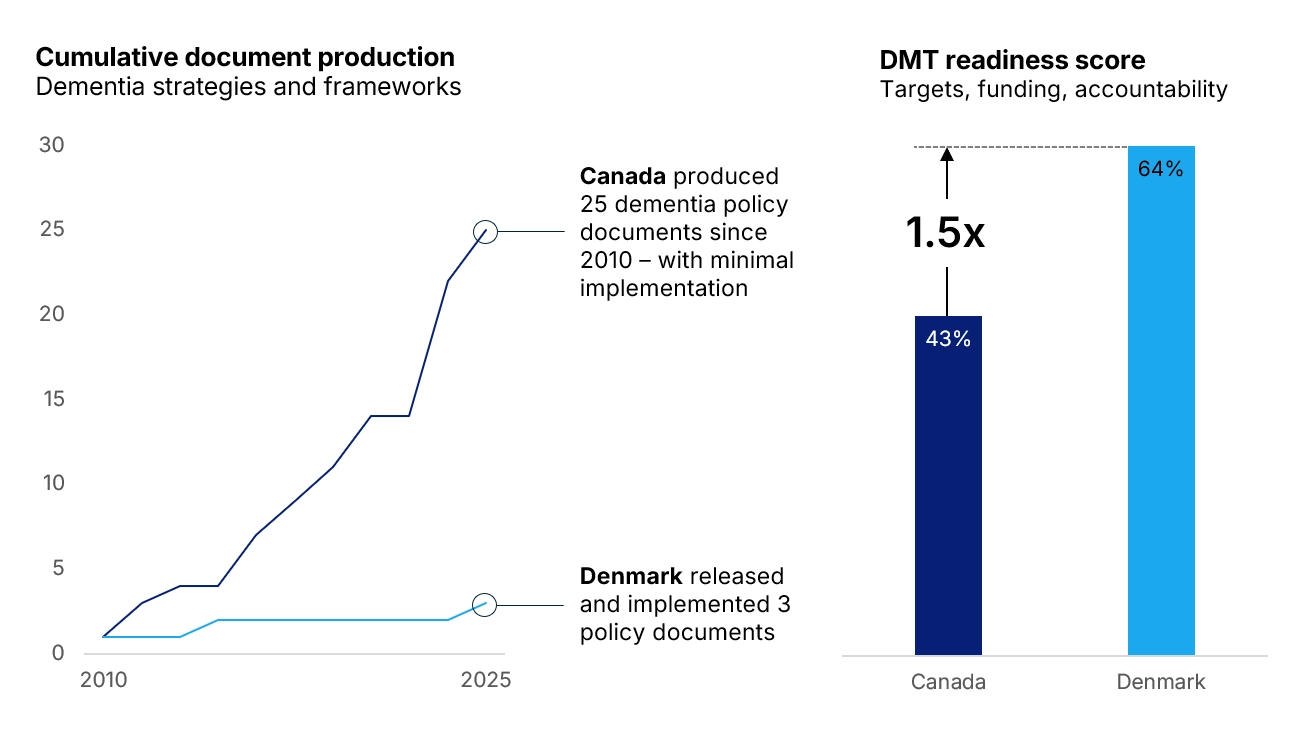Why Denmark’s dementia strategy delivers 1.5x better results than Canada’s
What makes a strategy actually strategic? When you examine Canada's approach to dementia preparedness, this question becomes uncomfortably relevant. Since 2010, Canada has produced 25 different dementia strategies and frameworks across federal and provincial levels. Yet despite this impressive volume of documentation, the country achieves minimal real-world impact on system readiness for disease-modifying therapies (DMTs). Something fundamental is missing.

Sources: 25 Canadian strategies: Provincial Geriatrics Leadership Ontario, “Developing a Dementia Framework for Ontario Evidence Scan Results” (2025) found 10 federal strategies and 15 provincial strategies. Denmark funding data: Denmark's National Action Plan on Dementia 2025 with DKK 470 million dedicated funding allocated to 23 specific initiatives over 2016-2019 period. DMT readiness score: Sivananthan, S.N., et al. "Lessons from Abroad for Canada's National Dementia Strategy: Actions for Implementation" in Canadian Health Policy, May 2025. Scoring framework assesses targets, funding mechanisms, accountability structures, and implementation effectiveness.
Strategy experts define genuine strategic positioning through clear winning aspirations, specific success metrics, dedicated accountability structures, and robust implementation mechanisms. True strategy requires disciplined trade-offs about what to do and what not to do. It demands targeted funding and management systems that reinforce strategic choices rather than work against them. What Canadian governments call "strategy" lacks these essential elements. These documents represent aspirational planning without the implementation rigor that transforms policy intentions into operational reality.
Consider Denmark's contrasting approach. Rather than generating numerous policy documents, Denmark released and implemented just three strategic documents during the same timeframe, backed by CAD$100 million in dedicated funding plus comprehensive accountability measures. The result? Denmark's healthcare system demonstrates a DMT readiness score 1.5 times higher than Canada's—64% versus 43% system preparedness.
This raises critical questions for Canadian stakeholders: What would genuine dementia strategy look like? What coordinated approaches might overcome institutional inertia and transform policy theater into patient impact?
About the author
Mark McCarvill is the Founder and Lead Facilitator at Mind Meeting Group, a strategy consulting firm based outside Vancouver, Canada. Mind Meeting Group helps business, government, and non-profit leaders align departments and mobilize teams through collaborative workshops that deliver execution-ready strategies.
